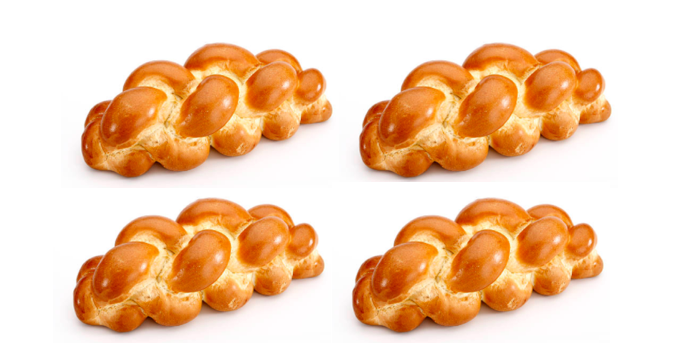A New Fiddler Revival at the State Theater in New Brunswick Shows the Balancing Act Is Intact
By Sue Weston and Susan Rosenbluth – Two Sues On The Aisle
Just before the first night of Chanukah in December, the State Theater in New Brunswick proved that Fiddler on the Roof remains as relevant today as it was when it first opened on Broadway in 1964.
The revival production in New Brunswick, which was presented at the same time that Fiddler in Yiddish is breaking records in Manhattan, presents a slightly different perspective from the original. Although the script was unchanged, the actors eschewed the ethnic dialect most often associated with Eastern European Jews. This could have been jarring, but the actors elicited wholehearted laughter even without the accents.
For some members of the audience, this was undoubtedly their first time hearing what has become Fiddler’s iconic lines. They responded because they could relate, which proves how timeless and universal Fiddler’s message remains.
Ever since the show premiered on Broadway, it has been a challenge to imagine that a musical about Jews feeling from a shtetl to escape Eastern European pogroms could have universal appeal. Who would believe that this show could provide hope to so many different people throughout the world struggling against persecution? But people from all walks of life and in every nation in which it has appeared have felt that the story was speaking directly to them.
The original concept was based on Sholom Aleichem’s tales of Tevye the Dairyman and his daughters. The initial vision was for the show to provide light entertainment until Jerry Robbins was tapped to choreograph, and he insisted it was a story about tradition. Robbins transfigured a series of stories about a dairyman with five marriageable daughters into a chronicle about survival itself. Fiddler’s issues, fundamental to society, center on Tevye’s positive outlook and belief that holding onto tradition can provide the balance needed to survive.
The familiar plot offered Tevye (Danny Arnold), a poor dairyman, and his wife, Golde (Maite Uzal) in the small town of Anatevka in the Pale of Settlement in 1905, struggling to balance tradition and changes taking place around them, striving to accommodate the needs of the individual and the demands of the community; and recognizing the middle path between dreams and reality, love and duty. In Anatevka, marriages were still arranged by Yente the Matchmaker (Carol Beaugard) and guidance was respected when it was given by the rabbi (David Scott).
The chorus masterfully opened the story by making it clear that, in Anatevka, everyone had their own traditional role to play. The delicate societal symphony was interrupted by Tevye’s three oldest daughters, Tzeitel (Kelly Gabrielle Murphy), Hodel (Ruthy Froch), and Chava (Noa Luz Barenblat), who chose to marry for love; it broke into total disharmony and discordance when the constable (Andrew Henrick) issued the edict forcing the Jews to leave.
Directed by Tony Award-winner Bartlett Sher and music director Ted Sperling and choreographed by the acclaimed Israeli choreographer Hofesh Shechter, the revival in New Brunswick preserved the essence of Fiddler, but there were a few dramatic changes. The production opened on a stark stage with an empty chair and the word “Anatevka” projected in big letters. A bare-headed man in a red coat enters carrying a book. He removes the coat, showing his tzitzits, puts on a cap, and steps backwards to become Tevye.
At the end of the show, the man reappears, still bare-headed and clad in his red coat as he steps into the procession of the departing exiled villagers. Is he Tevye? Or perhaps a distant relative who has assimilated? Does he represent all people forced to leave their homes?
In many ways, this revival goes further than the original when it comes to humanizing the characters. In the song “Matchmaker,” the daughters emphasize the words over the melody, pounding the reality of just what an arranged marriage entails for a girl “with no dowry, no money, no family background.”
The dances often subtly convey meanings without words. During the familiar bottle dance at Tzeitel’s wedding, one dancer drops his bottle, showing his humanity rather than his perfection.
In this production, a dance was added to the sequence when Tevye and Chava part, showing his struggle and inability to reconcile himself to her intermarriage.
In the duet between Tevye and Golde, ‘Do You Love Me?’ she responds to him at first with disinterest, which turns the song into a believable conversation between a couple with 25 years of marriage behind them.
Somewhat less flashy than the original Broadway production, this revival, nevertheless, sent the audience home with the songs still echoing in their hearts and minds. In the 55 years since the original debuted on Broadway, people have not changed at all. Many still face oppression, poverty, and the need to deal with change. Fiddler speaks to all of them and gives all of us the power to speak up and be heard. It reminds us of the importance of balancing family and community because “without traditions, our lives would be as shaky as a fiddler on the roof.”
This was a great escape from the mundane and an enjoyable evening out.
***
Two Sues on the Aisle bases its ratings on how many challahs it pays to buy (rather than make) in order to see the play, show, film, or exhibit being reviewed.
The revival of “Fiddler on the Rood” received 4 challahs






